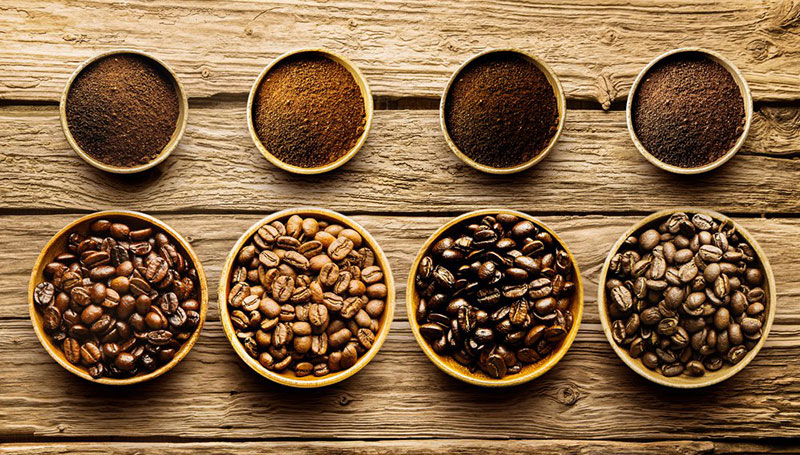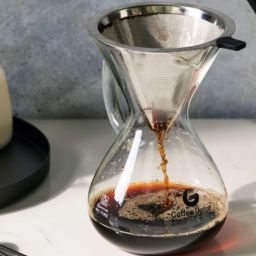
Single origin coffee captures the essence of the region where it’s grown. Unlike blends that mix beans from various places, single origin coffee comes from a specific farm, region, or country. This unique sourcing allows drinkers to experience the distinct flavors influenced by the local climate, soil conditions, and farming techniques. The trend towards single origin coffee is fueled by a growing interest among coffee lovers to explore these diverse taste profiles and connect more deeply with the coffee’s origins.
Key Takeaways for Buying Single Origin Coffee
- Benefits of Single Origin Coffee: Discover the unique advantages this coffee offers.
- Where to Buy: Learn about the best places to purchase single origin coffee.
- Choosing the Best: Tips on selecting the right single origin coffee for your taste.
What is Single Origin Coffee?
Single origin coffee refers to coffee beans sourced from one single producer, crop, or region in one country. It’s the coffee industry’s way of offering purity and a specific taste profile that reflects the local environment where the coffee is grown. There are generally three types of single origin coffee:
- Coffee from One Farm: Often seen as the most authentic form of single origin, it offers a specific snapshot of the area’s growing conditions.
- Coffee from Multiple Nearby Farms: This type still maintains a distinct regional character but combines crops from several farms within a close geographic area.
- Coffee from a Single Country: The broadest category, it encompasses coffee from several regions within one country, offering a taste that reflects national characteristics but with less specificity than the other types.
The Unique Profiles of Single Origin Coffee
The flavors of single origin coffee are deeply influenced by where the coffee is grown. Factors like climate, soil, and altitude play critical roles in shaping the beans’ characteristics. For instance, coffee grown at high altitudes in volcanic soil, like those from parts of Central America, typically features bright acidity and complex flavor notes. On the other hand, beans from lower altitudes may have a fuller body and sweeter taste, often found in some South American regions.
Temperature and rainfall patterns also significantly impact the beans. Consistent rainfall and moderate temperatures, as found in the Ethiopian highlands, help develop coffee with floral and fruity notes. Conversely, regions with varied climates can produce beans with a wide range of flavor profiles from one season to the next. This terroir-based distinction ensures that each cup of single origin coffee offers a unique sensory experience that cannot be replicated elsewhere.
The Benefits of Choosing Single Origin Coffee
Single origin coffee boasts several advantages over blended coffees, primarily due to its purity and traceability. Each batch of single origin coffee offers a unique flavor profile that reflects its specific growing conditions. This allows connoisseurs to appreciate and explore tastes that are tied directly to the landscape and climate of the origin country.
Moreover, the traceability of single origin coffee appeals to those interested in ethical consumption. Consumers can trace the coffee back to the farm or region of its origin, providing transparency about the product’s journey from bean to cup. This aspect is crucial for supporting sustainable practices and ensuring that farmers receive fair compensation for their labor and resources.
Online Retailers and Specialty Stores
When it comes to purchasing single origin coffee, online retailers and specialty stores are treasure troves of variety and freshness. These platforms offer a wide range of single origin coffees from across the globe, ensuring that you can find exactly what your palate desires. Whether you’re looking for a light, floral coffee from Ethiopia or a rich, earthy brew from Sumatra, online stores can provide you with numerous options.
What sets these online sources apart is not just the variety but also the freshness. Many online retailers roast beans on demand before shipping, which means the coffee that arrives at your door is often just days from being roasted. This practice ensures peak flavor and aroma, providing a superior coffee experience.
Customer support is another critical aspect where online retailers excel. These platforms often provide detailed descriptions of their coffee offerings, including taste notes, origin, and best use suggestions. If you have questions or need recommendations, customer service is typically just an email or phone call away, ready to help you make the perfect choice for your taste and brewing method.
Local Coffee Shops and Roasteries
Local coffee shops and roasteries offer their own set of advantages for single origin coffee enthusiasts. One of the most significant benefits is the freshness of the coffee. Local shops often roast small batches frequently, which means the coffee you buy is incredibly fresh. This freshness enhances the coffee’s flavor profiles and overall quality.
Supporting local businesses is another compelling reason to buy from local coffee shops. When you purchase from local roasteries, you’re contributing to your community’s economy and helping small businesses thrive. Additionally, local shops often have direct relationships with coffee farmers and can provide detailed information about the coffee’s origin and how it was grown, adding a layer of connection and transparency that is appreciated in the coffee community.
Direct Purchases from Coffee Farms
Direct trade coffee represents a model of buying where roasters or retailers purchase straight from the farms, cutting out both the traditional middlemen and complexities of the global coffee market. This approach not only ensures higher compensation directly to the coffee farmers but also fosters greater transparency and quality. Consumers benefit from knowing exactly where their coffee comes from and that their purchase supports fair and ethical practices.
For those interested in direct trade coffee, options are increasingly available through specialty coffee roasters’ websites or dedicated platforms promoting direct relationships with farmers. These platforms often highlight the farmers’ stories and the specific attributes of their coffee, providing a deeper connection to the coffee’s origin.
Selecting the Right Single Origin Coffee
Choosing the right single origin coffee can greatly enhance your brewing experience. Start by considering the flavor profile that appeals to you—whether it’s floral, fruity, earthy, or nutty. Each origin has its distinctive flavors influenced by the local growing conditions.
Next, consider the roast level. Light roasts typically preserve the original flavor of the coffee, making them ideal for tasting the unique characteristics of the bean. Medium roasts offer a balanced flavor, acidity, and body, while dark roasts are perfect for those who appreciate a bold, rich cup with less acidity.
Finally, think about your brewing method. Different brewing methods can highlight various aspects of coffee. For instance, pour-over is great for exploring complex flavors in light to medium roasts, whereas espresso might be better suited to darker roasts.
Brewing the Perfect Cup of Single Origin Coffee
To fully appreciate single origin coffee, selecting the right brewing method is key. Pour-over methods are excellent for uncovering the subtle flavors and aromas of these coffees. The slow brewing process allows for the extraction of lighter, complex flavors that might be lost in other methods.
The French press is another great option, particularly for those who enjoy a richer, fuller body. It allows more oils and fine particles from the coffee grounds into the final cup, enhancing the intensity and depth of flavor.
Lastly, consider adjusting your grind size and water temperature based on the roast level and origin. A finer grind and cooler water are generally better for lighter roasts to avoid over-extraction, whereas darker roasts can handle a coarser grind and slightly hotter water.
FAQs
What is the difference between single origin and blends?
Single origin coffee comes from one specific location, offering unique flavors influenced by its specific growing environment. Blends, on the other hand, are a mix of beans from multiple locations, designed to create a consistent flavor profile year-round.
What are the best storage practices for coffee?
To keep your coffee fresh longer, store it in an airtight container in a cool, dark place. Avoid the fridge or freezer, as moisture can affect the beans’ natural flavors.
How can I decode label information on coffee packages?
Coffee labels can tell you a lot about what to expect in your cup. Look for information on the origin, roast date, and flavor notes. The origin tells you where the coffee is from, the roast date indicates freshness, and the flavor notes describe the profile you might taste.
Final Thoughts
Single origin coffee offers a unique and rich experience that goes beyond just caffeine. Each cup is a reflection of its origin’s climate, soil, and care, bringing a world of flavors to your doorstep. Whether you’re a seasoned coffee lover or new to the nuances of coffee tasting, experimenting with different single origin coffees can expand your palate and enhance your appreciation for this global beverage.









